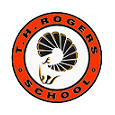
Thomas Horace Rogers School is an alternative primary and secondary public school and part of the Houston Independent School District. The school is at 5840 San Felipe in Houston, Texas, United States, outside of the 610 Loop and inside Beltway 8, west of Uptown Houston.
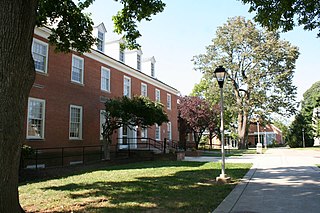
The Maryland School for the Deaf (MSD) offers public education at no cost to deaf and hard-of-hearing Maryland residents between the ages of zero and 21. It has two campuses located in Frederick and Columbia, Maryland.

The Florida School for the Deaf and the Blind (FSDB) is a state-supported boarding school for deaf and blind children established in 1885, in St. Augustine, Florida, United States.
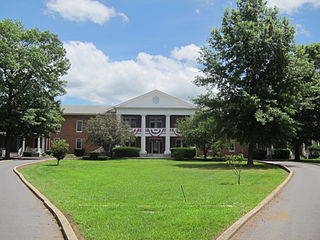
The West Virginia Schools for the Deaf and the Blind (WVSDB) were established by an Act of the Legislature on March 3, 1870. The School for the Deaf and the School for the Blind offer comprehensive educational programs for hearing impaired and visually impaired students respectively. There is also a unit for deafblind and multihandicapped children. Students are eligible to enroll at the age of three, must be residents of the state of West Virginia and exhibit a hearing or visual loss sufficient to prevent normal progress in the usual public school setting. The West Virginia Schools for the Deaf and Blind are located on a campus in Romney in West Virginia's Eastern Panhandle. Locally, the schools are referred to simply as The state school.
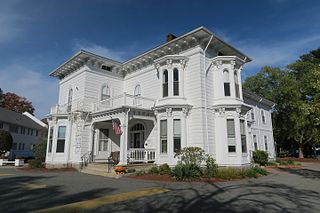
The Learning Center for the Deaf (TLC) is a Framingham, Massachusetts-based non-profit organization and school serving deaf and hard-of-hearing children and adults. The mission of The Learning Center for the Deaf is to ensure that all deaf and hard of hearing children and adults thrive by having the knowledge, opportunity and power to design the future of their choice.
Cincinnati Hills Christian Academy (CHCA) is a private, pre-kindergarten through twelfth grade, college preparatory, non-denominational Christian school located on four campuses in Cincinnati, Ohio. Three of its campuses (Edyth B. Lindner Campus, Founders' Campus, and Martha S. Lindner Campus) are located in northern Cincinnati, in Sycamore Township and Symmes Township, near the intersection of Interstate 71 and Interstate 275. The Otto Armleder Memorial Education Center is located in downtown Cincinnati.
Grand Prairie Independent School District is a school district headquartered in Grand Prairie, Texas, United States.

The Kentucky School for the Deaf (KSD), located in Danville, Kentucky, United States, is a school that provides education to deaf and hard-of-hearing children from elementary through high school levels. Founded in 1823, it was the first school for the deaf west of the Allegheny Mountains. Jacobs Hall, its oldest surviving building, was designated a National Historic Landmark in recognition of this history.
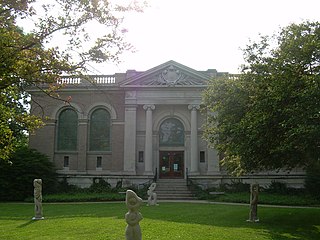
The neighborhood of Irvington, named after Washington Irving, includes Irvington Historic District, a historic district in Indianapolis, Indiana. The historic district is a 545-acre (221 ha) area that was listed on the National Register of Historic Places in 1987. That year, the district included 2,373 contributing buildings, 5 other contributing structures, and 2 contributing sites.

Rochester School for the Deaf (RSD) is a private, tuition-free school for deaf and hard of hearing students to attend in Rochester, New York. It is one of the oldest and most respected preK-12th grade schools for children with hearing loss and their families in the United States, and one of nine such school in the state of New York. Serving the Central and Western portions of New York State, it has been educating students since 1876.

The Virginia School for the Deaf and the Blind, located in Staunton, Virginia, United States, is an institution for educating deaf and blind children, first established in 1839 by an act of the Virginia General Assembly. The school accepts children aged between 2 and 22 and provides residential accommodation for those students aged 5 and over who live outside a 35-mile (56 km) radius of the school

The Minnesota State Academy for the Deaf (MSAD) is a public residential school serving deaf children in Minnesota, United States. It is one of two Minnesota State Academies in Faribault and operated by the state for particular student populations.
The Tennessee Schools for the Deaf (TSD) is a state-operated residential and day school for deaf and hard-of-hearing students who reside in the state of Tennessee ranging from pre-kindergarten to grade 12 and also includes a Comprehensive Adult Program. The main campus is located in Knoxville, Tennessee within the historic Island Home Park neighborhood. There are two additional campuses serving elementary students in Nashville and Jackson.

The Pennsylvania School for the Deaf is the third-oldest school of its kind in the United States. Its founder, David G. Seixas (1788–1864), was a Philadelphia crockery maker-dealer who became concerned with the plight of impoverished deaf children who he observed on the city's streets. The current school building is listed by the National Register of Historic Places, and two former campuses are similarly recognized.

The North Carolina School for the Deaf (NCSD) is a state-supported residential school for deaf children established in 1894, in Morganton, North Carolina, US.
Iowa School for the Deaf is a pre-K to 12th grade school for deaf and hard-of-hearing students located in Council Bluffs, Iowa. It serves students who live in Iowa and Nebraska.

Founded in 1850, the Arkansas School for the Deaf (ASD) is a state-run public school in Little Rock, Arkansas, United States, serving deaf and hard of hearing students through residential, day school, and part-time enrollment programs. The school offers preschool through high school, and is affiliated with the Arkansas Association of the Deaf (AAD) and the National Association of the Deaf (NAD).

The Illinois School for the Deaf (ISD), located in Jacksonville, Illinois, is a state-operated pre-kindergarten, elementary and high school for the deaf and hard-of-hearing. ISD uses both English and American Sign Language, with a policy modeled after the Wisconsin School for the Deaf.
Kendall Demonstration Elementary School (KDES) is a private day school serving deaf and hard of hearing students from birth through grade 8 on the campus of Gallaudet University in the Trinidad neighborhood of Washington, D.C. Alongside Model Secondary School for the Deaf, it is a federally funded, tuition-free demonstration school administered by the Laurent Clerc National Deaf Education Center at Gallaudet University.




















